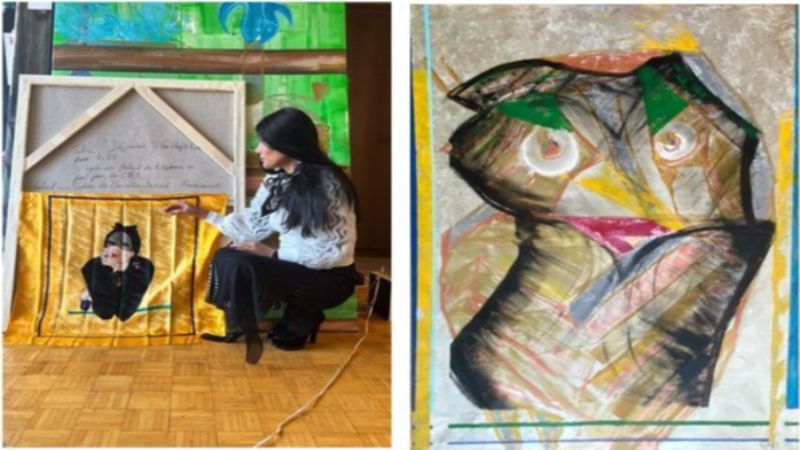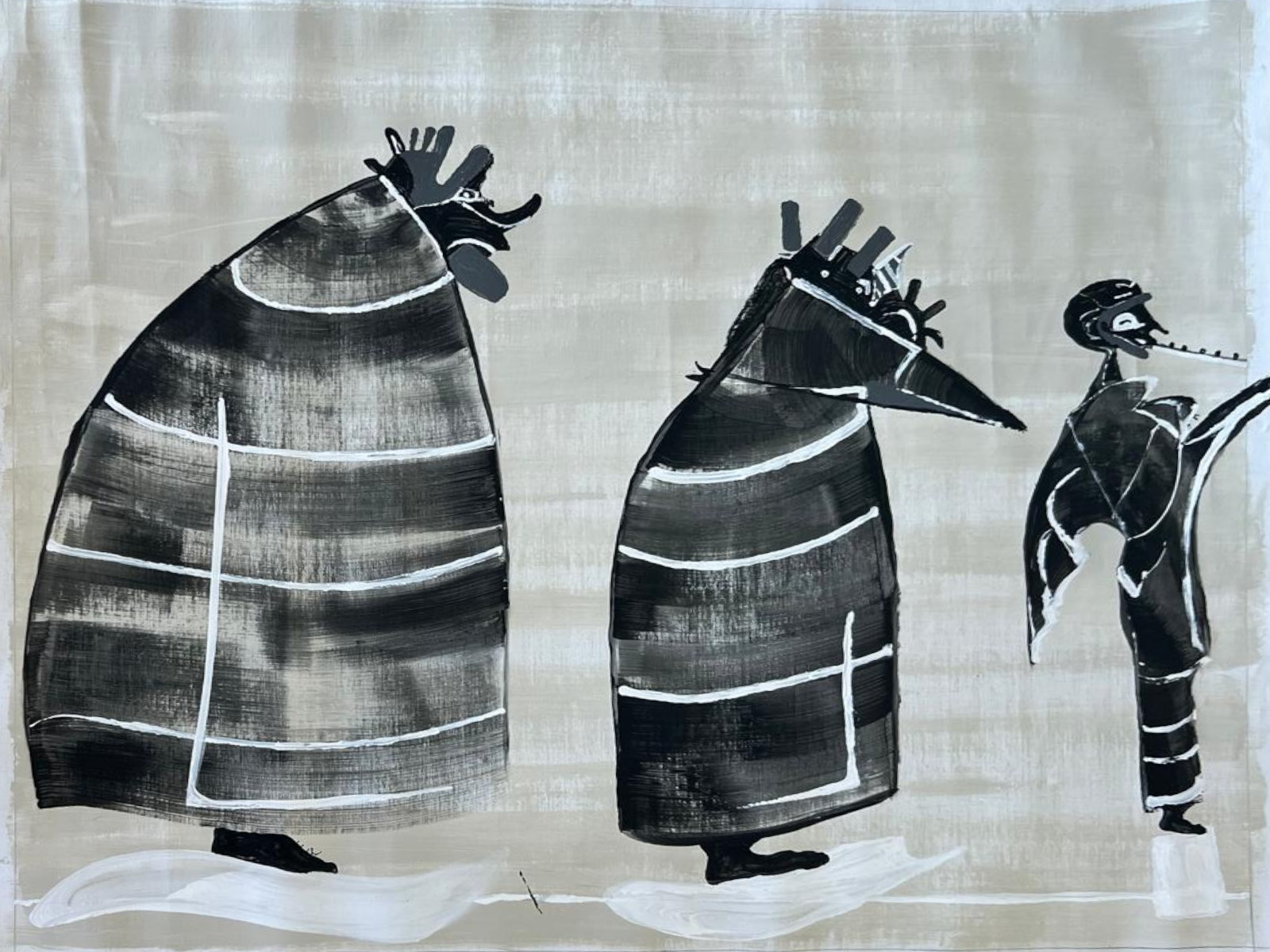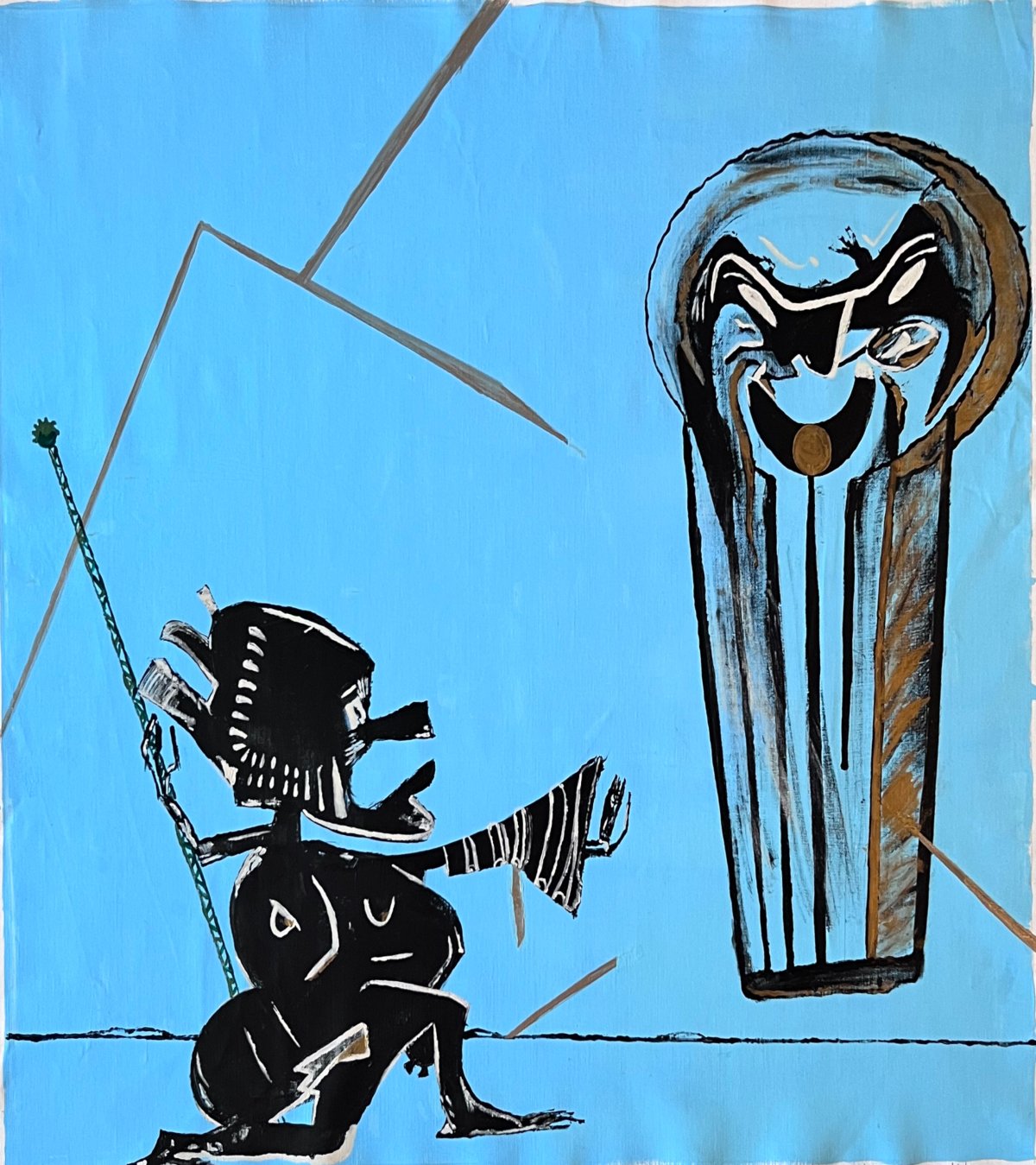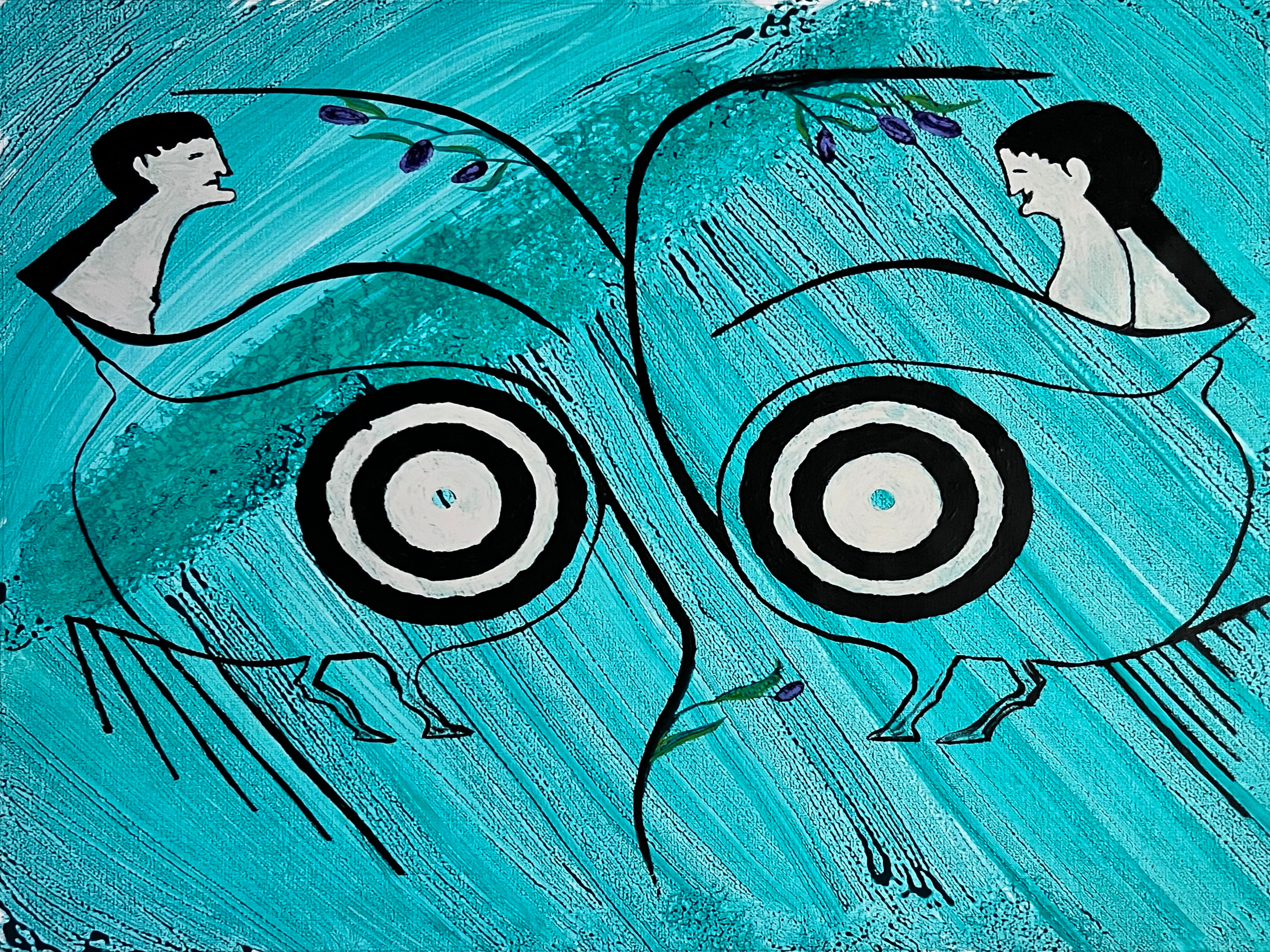You will find here a selection of a few paintings among the 100 Agram paintings.
They are all registered at Swiss law firm Bratschi (www.bratschi.ch), known for their expertise in art transactions.
Breakfast at Van Cleef & Arpels85'000 CHF
2025
125x 99 cm
Acrylic on canvas
125x 99 cm
Acrylic on canvas
With Breakfast at Van Cleef & Arpels, Agram reflects on the legacy of pop-art and the possibility of extending it in another direction, by integrating a dialogue between luxury objects, popular culture and the memory of the eye.

Le Joueur de Flûte
45'000 CHF
2024105 x 95 cmAcrylic on canvas
2024
Le Joueur de Flûte d'Agram (The Pied Piper of Agram) transposes into the space of the painting a narrative motif present in the collective imagination: that of the Pied Piper of Hamelin. Here, however, the figure is more than a literal evocation of the tale: it becomes the pivotal point of a shift between order and loss of control, between melody and dissonance. On the right-hand side of the painting, the flute-player is not guiding children, but drawing two monstrous forms out of the canvas, ambiguous figures that oscillate between human and animal, luminous creature and shadow. This shift in the main subject radically alters what is at stake in the scene: the Pied Piper is no longer just an enchanter, he is a ferryman, a figure who liberates or condemns. The composition creates the linearity of movement and the indeterminacy of becoming. As in medieval frescoes, where procession becomes a mode of narrative structuring, here Agram uses the displacement of figures as a visual motor, a process reminiscent of dance scenes where the living and the dead draw each other into an inexorable cycle.

Oedipe et le Sphinx I
37'000 CHF
2024
105 x 95 cm
Acrylic on canvas
2024
105 x 95 cm
Acrylic on canvas
In this first variation on the Oedipus myth, Agram constructs a scene in which the confrontation is less a struggle than a simulacrum, a confrontation doomed to failure from the outset. In contrast to classical representations, in which the Sphinx towers over Oedipus, Agram opts for a frontal confrontation, highlighting the tragic unconsciousness of the protagonist. The blue background immediately imposes a particular atmosphere: it's not the blue of transcendence or dream, but a space of indecision, a surface that seems both to open up and enclose, in the image of Oedipus' own condition. Is he moving towards revelation, or towards his own blindness? The ambiguity remains. Here, Oedipus is a modern-day Don Quixote, throwing himself headlong into a battle whose scope and consequences he cannot fathom. His attitude is not that of a lucid hero, but that of a fighter who is unaware that he is already lost. This tension between the assured gesture and the inevitability of failure is reminiscent of rogue chivalric figures, where the ideal and the absurd coexist in the same desperate charge.

Chimères35'000 CHF
2024
105 x 95 cm
Acrylic on canvas
2024
105 x 95 cm
Acrylic on canvas
With Chimères, Agram plunges into the heart of a pictorial tradition in which hybrid figures embody the ambiguity of bodies and identities, oscillating between protection and confinement, union and opposition. Here, a couple stands enclosed within the structure of a chimerical creature, trapped in a form that both exceeds and contains them. Far from a simple rereading of medieval bestiary, this work questions the very status of the chimera in the history of representation. From the grotesques of the Renaissance to the hallucinatory visions of Bosch, the chimera is the site of all kinds of metamorphoses, a moving structure that absorbs and redefines the figures it encompasses. In Agram, this dynamic is pushed to the extreme: the couple is no longer clearly distinguishable from the creature that surrounds them, as if the boundary between the beautiful and the monstrous had become undecidable. This dialogue with medieval art is coupled with a reflection on the body as a space of alteration and fusion, an idea that also runs through the great European mythological cycles.
